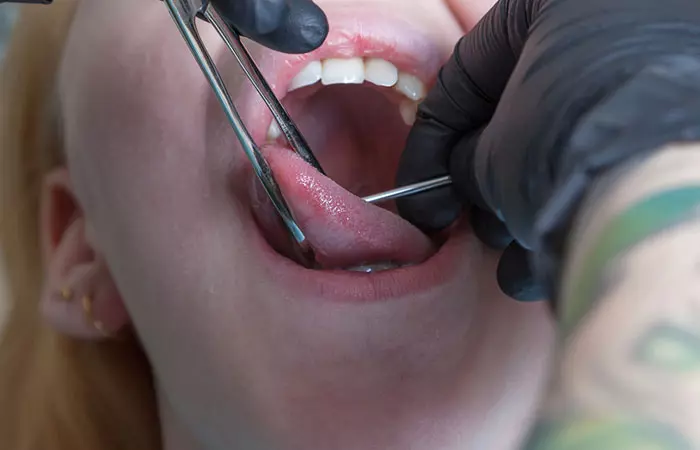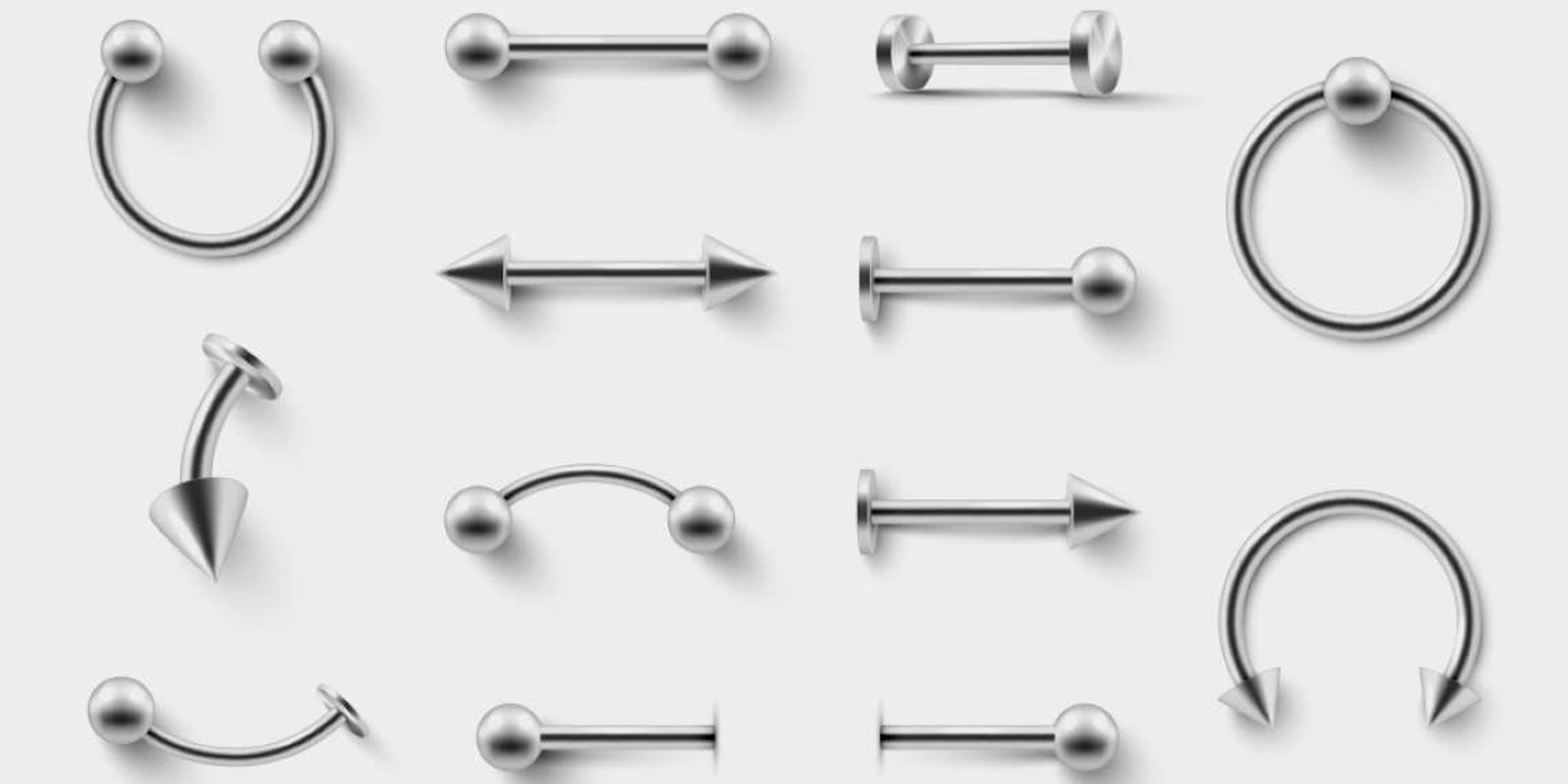What Is a Tongue Piercing?
A tongue piercing involves inserting jewelry through the tongue, typically in the center. It’s a popular choice for self-expression due to its edgy look and hidden placement. However, proper care is essential to avoid complications.
The Procedure: What to Expect

Step 1: Consultation
- The piercer examines your tongue to ensure it’s suitable for piercing.
- Discuss placement and jewelry options.
Step 2: Sterilization
- The piercer sanitizes the area to prevent infection.
- Sterile tools and gloves are used throughout the process.
Step 3: Piercing Process
- The tongue is clamped to stabilize it.
- A hollow needle creates the hole, and the jewelry is inserted immediately.
- The entire procedure typically takes 5–10 minutes.
Healing Process: Timeline and Tips
Healing Stages
- First 7–10 Days: Swelling and tenderness are standard. Eating soft foods and staying hydrated help minimize discomfort.
- 2–4 Weeks: Swelling decreases, but slight sensitivity may persist.
- 4–8 Weeks: Complete healing occurs with proper care.
Aftercare Tips
- Rinse with Saltwater: Use a saline solution or mouthwash after meals and before bed.
- Avoid Spicy Foods and Alcohol: These can irritate the piercing and prolong healing.
- Be Gentle: Avoid playing with the jewelry to prevent swelling or damage.
- Maintain Oral Hygiene: Brush and floss regularly, but be gentle around the piercing.
Common Risks and How to Prevent Them
Infection
- Signs: Redness, pus, or prolonged swelling.
- Prevention: Use antibacterial mouthwash and avoid touching the piercing with dirty hands.
Swelling or Bleeding
- Prevention: Ice chips or cold water help reduce swelling. Avoid hard or crunchy foods during the healing period.
Tooth or Gum Damage
- Cause: Jewelry that rubs against teeth or gums.
- Solution: Opt for high-quality, smooth jewelry and check the fit regularly.
Choosing the Right Jewelry for Tongue Piercings

Initial Jewelry Options
- Straight Barbells: The most common choice for new piercings.
- Material: Opt for surgical steel, titanium, or bioplast to reduce irritation and allergic reactions.
Jewelry Sizes
- Length: Longer barbells are used initially to accommodate swelling.
- Gauge Size: Standard sizes are 14G or 16G.
Upgrading Jewelry After Healing
- Shorter Barbells: Replace the longer initial barbell once the swelling subsides.
- Decorative Ends: Add gemstones or colorful beads for a stylish look.
- Flexible Bars: Suitable for comfort and reducing tooth damage.
Pros and Cons of Tongue Piercings
Pros
- Stylish and Unique: Makes a bold fashion statement.
- Easy to Hide: Can be concealed when necessary.
- Versatile Jewelry Options: Allows for personalization and style upgrades.
Cons
- Extended Healing Time: Requires extra care and attention during the healing process.
- Risk of Oral Health Issues: Potential for chipped teeth or gum damage.
- Speech Adjustment: Temporary difficulty speaking until the tongue adjusts to the jewelry.
Is a Tongue Piercing Right for You?
Before committing, consider your pain tolerance, lifestyle, and willingness to follow aftercare instructions. Consulting with a professional piercer ensures you’re prepared for the procedure and healing process.
Final Thoughts
Tongue piercings can be a fun and fashionable addition to your style, but proper care is essential for a smooth healing process. From selecting the right jewelry to maintaining oral hygiene, understanding each step ensures your piercing stays safe and stylish.




